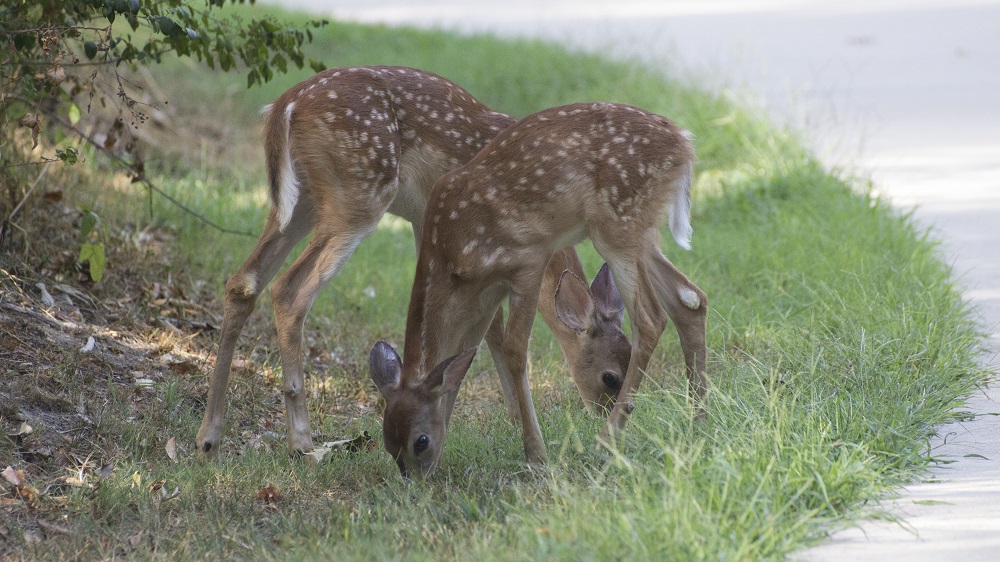Early summer is fawn season in the Ozarks. Many of the female deer that inhabit Crystal Bridges’ grounds are tending to their babies. This can lead to some consternation among guests to our trails and grounds who are unfamiliar with deer parenting habits.
To protect her young, a mother deer leaves it in a sheltered spot in the forest while she goes out foraging. Unlike adult deer, fawns have very little scent, and they are naturally camouflaged to blend into the dappled light of the forest floor. This means they are at little risk from predators if they stay quiet and still.
Being used to a more attached, “helicopter” style of parenting, we humans will sometimes worry if we find a fawn alone in the woods. We assume the mother has abandoned the fawn or been killed, leaving the poor baby orphaned. Our instinct may be to gather it up and “rescue” it.
We encourage you to stop and observe before doing anything of that sort. It is more than likely that the mother deer is nearby and will come back in the evening to feed and care for her fawn. You serve the fawn best by leaving it undisturbed in place. If you are concerned, you may come back in the evening and check to see if the fawn is still alone. Chances are, the mother will have come for it by then. Many healthy fawns are “kidnapped” every year by well-meaning humans who don’t understand deer habits.
Sometimes older fawns are curious and will attempt to follow a human who stumbles upon their hiding place. If a fawn follows you, wildlife experts suggest you gently push on its shoulders until it lies down, then slowly leave the area.
Sadly, it does sometimes happen that a doe is killed on the road, or by predators or disease, leaving her fawn orphaned. There are wildlife rehabilitators who can help the fawn survive in this case. (In the Crystal Bridges area, we rely on Lynn Sciumbato of Morning Star Wildlife Rehabilitation. New Hope Veterinary Clinic in Rogers is a receiving clinic for her).
Wildlife rehabilitator Annette Tucker, of Wild Heart Ranch in northeastern Oklahoma, suggests we look at the fawn’s ears for clues about its state of health. An orphaned fawn that has been unable to nurse will be dehydrated, causing the tips of the fawn’s ears to curl backward slightly. Healthy, well-fed fawns have straight ears. Tucker offers a simple rhyme to help you remember: “Ears are straight, fawn’s doing great. Ears are curled, fawn’s alone in the world.”
Fawns have special dietary needs and require around-the-clock care. It is also very dangerous for them to become accustomed to interacting with humans. Please do not ever attempt to rehabilitate any wild animal on your own.
So… if you see a fawn at Crystal Bridges, congratulations, you’ve been treated to a glimpse of nature’s artwork! Please treat it in the same way you would the artwork inside the Museum: observe, enjoy, do not touch, and take the memory of your special encounter home with you!





